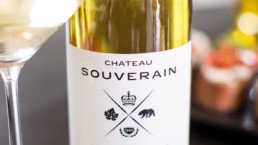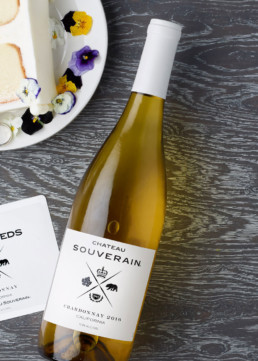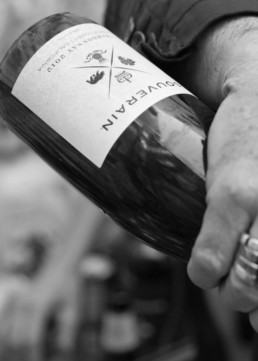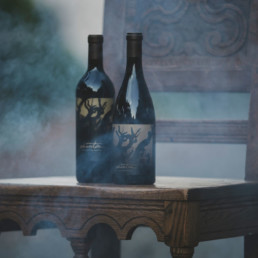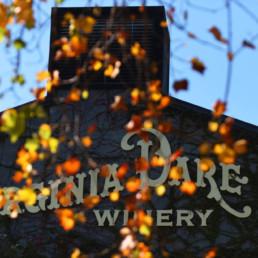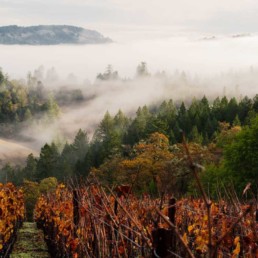Château Souverain came to be in 1944 with a tale many will be able to relate to, Lee Stewart was working as a sales exec and frankly, he was miserable. Concrete jungles, deadlines, meetings and neckties threatened to consume him, so he did what many an office worker dreams of whilst staring from the office window. He got out. He bought thirty acres and an old winery on Howell Mountain in Napa Valley.
A little over a decade after his first harvest, Lee Stewart hired Mike Grgich, giving him his first job at a Napa winery. Mike would later go on to become head winemaker at Château Montelena and his Chardonnay would win 1st prize at the 1976 Judgment of Paris.
In the 15 years following this, Château Souverain gained momentum. It won 93 medals at the California State Fair in only a 10 year span, Lee focussed heavily on clean winemaking practices. It launched a series of Cabernets and it moved to Sonoma’s Alexander Valley before Lee Stewart hung up his hat as winemaker in 1980, but not before he had done enough to earn respect throughout the world for all he had done. Charles Lewis Sullivan in his book A Companion to California Wine said,
“Anyone who examines the historical background of the premium wine boom in California that began in the 60s must look to Lee Stewart’s Château Souverain.”
In the 1990’s, Ed Killian came aboard to take the reins. Château Souverain then moved to the historic Asti winery, before launching a new look in 2014 designed to pay homage to Lee Stewart.
We are currently stocking the 2016 vintage of Château Souverain Chardonnay which offers a plush texture and balanced acidity with a long, flavourful finish. Roast pear, creme brulee, lemon, what more could you want?
We are counting our lucky stars this year in the chardonnay department. It’s no secret that we are all avid fans of this voluptuous, versatile variety and represent a number of them that are simply delicious – from lean Chablis’ to quaffable Cali’s. Imagine our excitement when the opportunity arose for us to get in a bottle of the renowned Château Souverain Chardonnay. They do say good things come in threes, and in this case it really rang true. After seeing roaring success in New Zealand with Bogle Chardonnay, we were offered an offshoot from the Bogle brand, ‘Phantom’ Chardonnay – a good step up from everyone’s staple. And then Virginia Dare followed – a wine with so much history and mystery it’s impossible not to be captivated by it. The golden trio. 2019 is definitely the year of chardonnay!
If the world of wine were to hold a crown, chardonnay would certainly be the golden jewel at its centre.
Chardonnay holds the title for being one of the most widely planted grape varieties in the world. It is a direct descendant of the pinot noir variety (a little fun-fact not known by many.) It was a cross between the pinot noir grape and another ancient variety, the gouais blanc. But unlike the temperamental (albeit delicious,) pinot noir vines from which it came, chardonnay shows an extraordinary adaptability to thrive in almost every region and terroir where it’s cultivated.
Chardonnay had its humble beginnings in none other than Burgundy, and was quickly spread around all the French regions by the monks who tended the vineyards. But it was not the impressive speed of its growing popularity that to this very day makes this golden grape so famous. It was the wine it produced and still continues to produce. The most celebrated Crus in Burgundy, as well as the Blanc de Blancs in Champagne are made from chardonnay.
When the ‘new-world countries’ stepped up to bat, they took reference from the old-world gurus. What was the best made from? How were they doing it? And so, French grape varieties started to spread once more, including chardonnay.
Chardonnay saw nothing but success for centuries. It was the pinnacle of fine wine, with only one rather recent speedbump marring its good name. The ABC (“Anything but chardonnay,”) movement is one which took hold after yet another particularly booming decade in the 90’s. The extreme popularity of chardonnay meant many new-to-the-game producers wanted in on this trend. They started to turn out chardonnays that were heavily oaked in order to poorly mimic the qualities of Burgundy Crus. The oak wasn’t inherently bad, but it was heavily overused in many respects. And thus the ABC movement began – “Anything but chardonnay” were the words uttered by many a consumer for a number of years.
This movement of course, was but a blip for this variety. It takes a little more than a few years of naive over-oaking to permanently damage the glowing reputation it has spent so many years building. In 2016, the Wine and Spirit Trade Association found 32% of people had consumed chardonnay in the last month, making it the UK’s third most popular wine behind Pinot Grigio and Sauvignon Blanc (47%). Even the strictest ABC’er not yet willing to let go of the grudge against chardonnay can sometimes be found enjoying a sneaky Chablis every so often…
The chardonnay grapes produce elegant wines with aromas of acacia, hazelnut, almond, brioche and citrus fruit when the wine is young, but that isn’t to say the grape isn’t versatile. Quite the opposite, in fact it boasts a large variety of aromatic possibilities, different palate structures, acidity and body levels, but it almost always remains rich and complex, making this grape variety remarkably easy to pair.
With the spring coming, you will be able to enjoy your glass of chardonnay with all kinds of fish & seafood – to have it cooked or raw will be your only concern. The richness of chardonnay is particularly marvellous with lobster, crab or sushi for example. You could also relish this golden goodness with a large variety of white meats like chicken or pork (perfect for the barbeque…) but also with different cheeses because of its natural acidity.
So pour your glass and enjoy the New Zealand springtime with one of our chardonnays from the golden trio!

2016 Château Souverain Chardonnay
“This is a flavorful wine that combines vivid fruit flavors and judicious use of oak for a great sense of balance and composition. Butter, vanilla and pear aromas precede almond and baking spice flavors that are nicely backed by more pear and apple.”
Wine Enthusiast (91 points)
